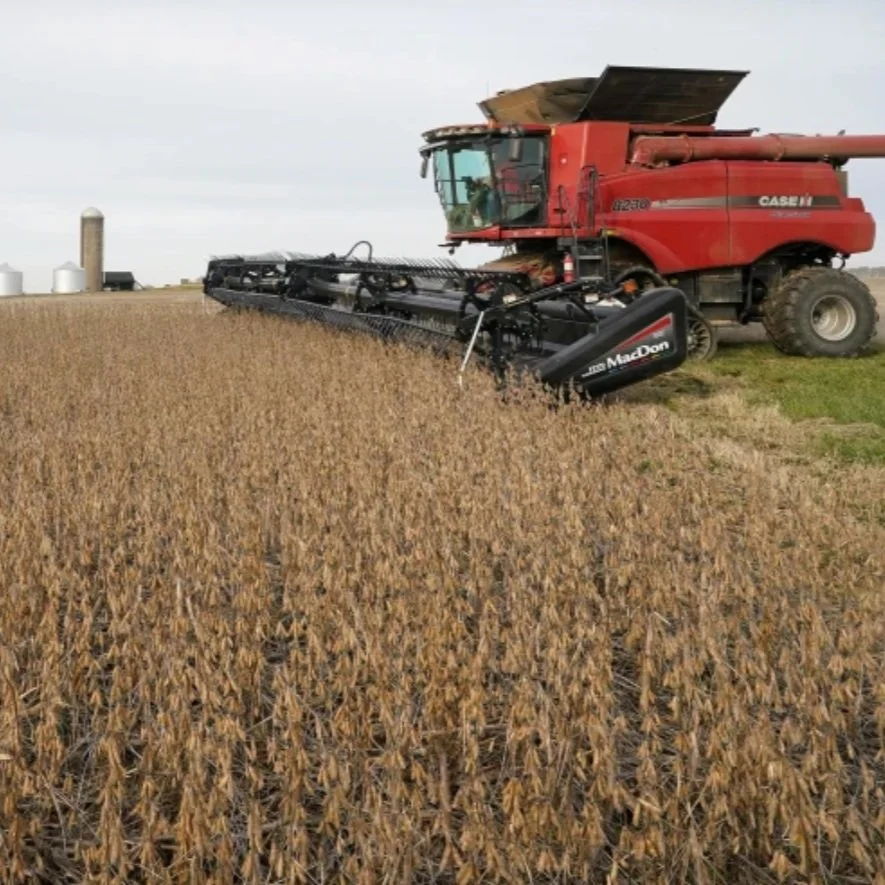Soil organic matter improves soil chemical properties, which includes the increase of nutrient status, cation exchange capacity (CEC), and anion exchange capacity. Soil organic matter is also known for the slow release of nutrients to the plants, protects nutrients in available forms to the plants, and reduces nutrient leaching.
Read MoreOne of the world’s biggest crop traders has halted loading of grain vessels at U.S. Gulf terminals as the region’s worst snowstorm in 130 years slams the region.
Archer-Daniels-Midland Co. declared force majeure in southern Louisiana with vessels struggling to navigate the weather conditions, according to a person familiar with the matter. The company didn’t immediately provide comment.
Read MoreThe 2024/25 U.S. corn outlook calls for lower production, feed and residual use, exports, and ending stocks. Corn production has been revised downward by some 276 million bushels to an estimated 14.9 billion bushels, mainly due to a 3.8-bushel per acre cut in yield to 179.3 bushels which was partially offset by a 0.2-million acre increase in harvested area. Total corn use is down 75 million bushels to 15.1 billion.
Read MoreWhen Greg Tylka talks with Iowa soybean growers about soybean cyst nematode (SCN), he provides a sobering perspective.
His data indicates SCN is found in every county of the state, and 70% to 75% of Iowa fields harbor the pest.
Read MoreAs farmers begin making plans for the upcoming growing season, many are bracing for the likelihood of another year marked by tight margins.
“Production costs for 2025 are estimated to decrease for the second consecutive year, which is good news,” said LSU AgCenter economist Michael Deliberto.
Read MoreLouisiana corn area harvested is 440,000, down 35 percent from 2023. The average yield is estimated at 185 bushels per acre, up 10 bushels from last year. Production totaled 81.4 million bushels, down 32 percent from 2023.
Upland cotton harvested acres is 148,000, up 29 percent from 2023. The yield is expected to average 1,070 pound.
Read MoreThe LSU AgCenter conducts research that provides valuable information for Louisiana farmers. To help growers make informed decisions about variety selection and fungicide use, the LSU AgCenter conducts side-by-side soybean official variety trials (OVT) at research stations. For the OVT, seed companies and university-based breeding programs enter varieties to be evaluated in different growing conditions across Louisiana.
Read MoreThe 2024 OVT Trial was planted at these LSU AgCenter research stations: Central Station, Baton Rouge; Dean Lee, Alexandria; Iberia, Jeanerette; Macon Ridge, Winnsboro; Red River, Bossier; and Rice Station, Crowley. The MG 3.9-4.4 OVT data from the Red River Research Station was not included due to extreme weather damage.
Read MoreAbout 200 farmers, consultants and other agriculture industry professionals attended the 64th annual Tri-State Soybean Forum last Friday.
They took stock of both the good and bad in soybean production in Arkansas, Louisiana and Mississippi.
Read MoreLSU AgCenter plant pathologist Paul “Trey” Price received the Louisiana Soybean and Feed Grains and Promotion Board Distinguished Professorship on Nov. 20, at the board’s proposal meeting in Baton Rouge.
Read MoreAmerican farmers are worried that President-elect Donald Trump’s sweeping tariff plans will curb their access to top soy buyer China, but tariffs could also lure companies to build more U.S. crushing plants, hungry for domestic supplies.
Read MoreThe first state to complete the 2024 soybean harvest was a surprise: Minnesota has finished harvest, the USDA said in the latest Crop Progress Report, released Nov. 4. The state was 5 percentage points ahead of its five-year average for Nov. 3.
This is a change from 2023, when Louisiana was the first state to get all of its soybeans in the bin.
Read MoreLouisiana corn for grain production is forecast at 84.1 million bushels, unchanged from the October 1 forecast but down 29 percent from 2023. Based on conditions as of November 1, yield is expected to average 189 bushels per acre, unchanged from last month but up 14 bushels from last year. Producers expect to harvest 445,000 acres of corn for grain, down 235,000 acres from 2023.
Upland cotton production is forecast at 310,000 bales, up 10,000 bales from the October 1 forecast and 101,000 bales above last year.
Read MoreSoy growers are raising concerns as EPA tightens glufosinate-P registration restrictions, a move some farmers are calling a “result of caving to pressure from environmental groups.”
Read MoreAgriculture giants including Cargill Inc. and Bunge Global SA are slowing their buying of soybeans due to uncertainty over U.S. biofuels policy.
Read More














